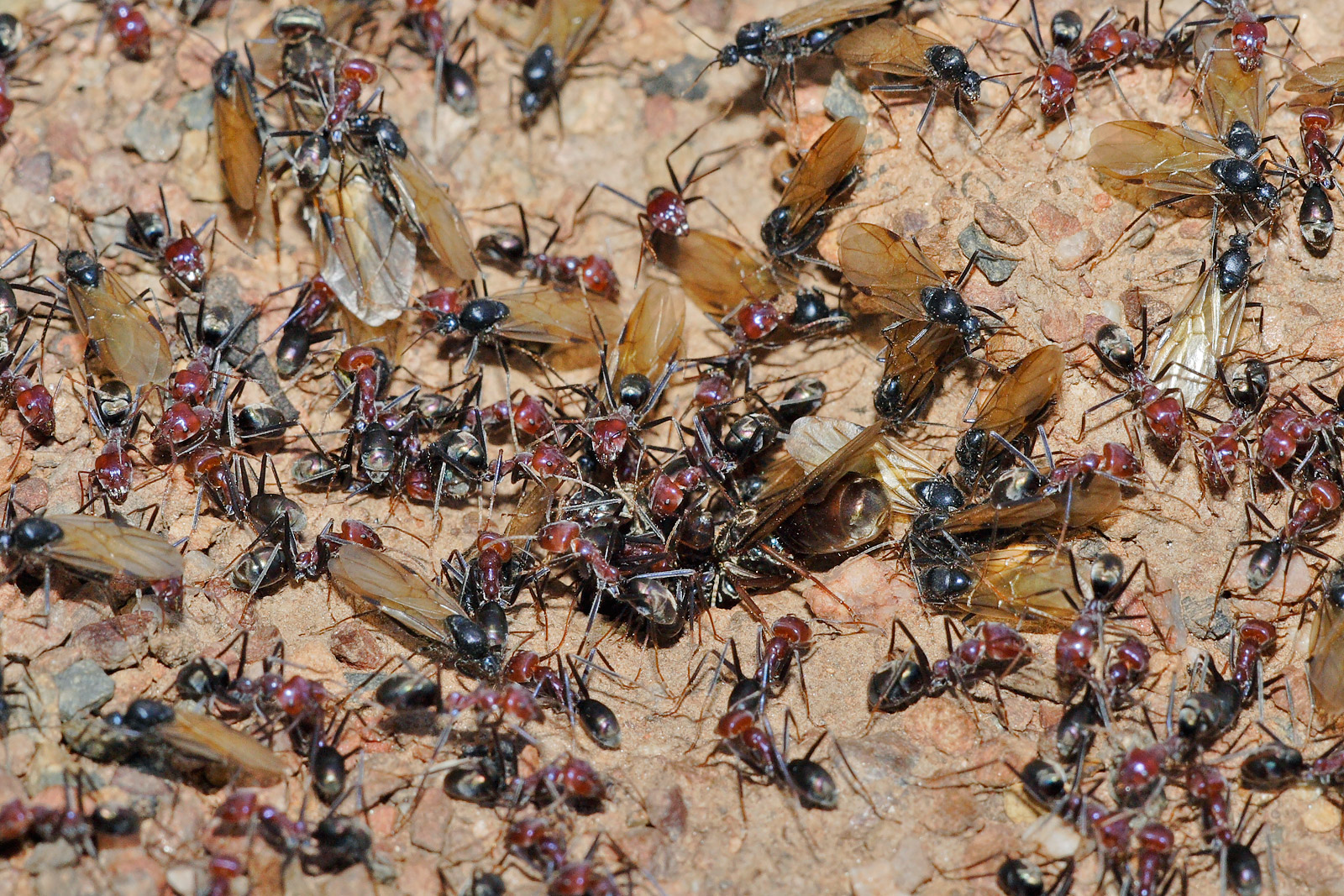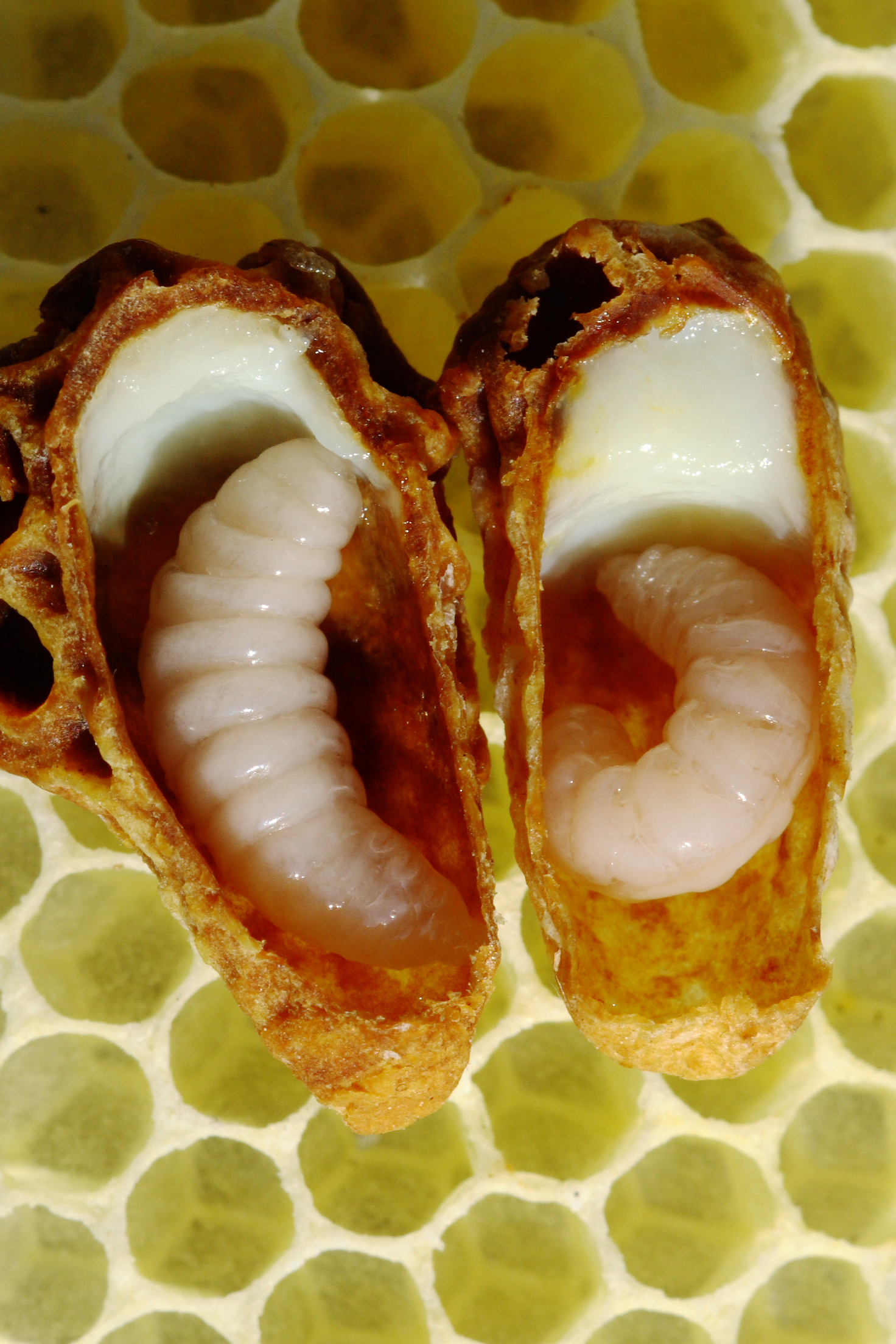|
Gyne
The gyne (, from Greek γυνή, "woman") is the primary reproductive female caste of social insects (especially ants, wasps, and bees of order Hymenoptera, as well as termites). Gynes are those destined to become queens, whereas female workers are typically barren and cannot become queens. Having a queen is what makes a "queenright" hive, nest, or colony of eusocial insects. A colony with multiple queens is said to be a polygyne form, whereas one with only one is a monogyne form. The ancient Greek origin of ''gyne'' meant a woman who had given birth to at least one child. In species lacking morphological castes (i.e., where "workers" may not be sterile), the term "gyne" is usually reserved for those females whose entire life is spent as a reproductive or potential reproductive, as opposed to those who start life as a worker and subsequently attain reproductive status (often called a "replacement queen" or a "laying worker"). These can be seen in certain species of stingless be ... [...More Info...] [...Related Items...] OR: [Wikipedia] [Google] [Baidu] |
Red Imported Fire Ant
''Solenopsis invicta'', the fire ant, or red imported fire ant (RIFA), is a species of ant native to South America. A member of the genus ''Fire ant, Solenopsis'' in the subfamily Myrmicinae, it was Species description, described by Swiss entomologist Felix Santschi as a variant of ''Solenopsis saevissima, S. saevissima'' in 1916. Its current species, specific name ''invicta'' was given to the ant in 1972 as a separate species. However, the variant and species were the same ant, and the name was preserved due to its wide use. Though South American in origin, the red imported fire ant has been accidentally introduced in Australia, New Zealand, several Asian and Caribbean countries, Europe and the United States. The red imported fire ant is Polymorphism (biology), polymorphic, as workers appear in different shapes and sizes. The ant's colours are red and somewhat yellowish with a brown or black Gaster (insect anatomy), gaster, but males are completely black. Red imported fire ants ... [...More Info...] [...Related Items...] OR: [Wikipedia] [Google] [Baidu] |
Plebeia Remota
''Plebeia remota'' is a species of stingless bee that is in the family Apidae and tribe Stingless bee, Meliponini. Bees of the species are normally found in a few states in southern Brazil and their nests can be found in tree cavities. Depending on the region, ''P. remota'' may have a different morphology and exhibit different behaviors. The bee's diet consists of nectar and pollen that are collected intensely from a few sources. Researchers have conducted a multitude of studies analyzing the changes that occur in the colony during reproductive diapause and what happens during the provisioning and oviposition process or POP. Taxonomy and phylogeny ''P. remota'' is a member of the order Hymenoptera, which is the insect order comprising bees, wasps and ants. Within Hymenoptera, it belongs to the family Apidae. This bee belongs in the tribe Stingless bee, Meliponini. The greatest number of Meliponini species reside in the Neotropics where there are about 420 species known. Within the ... [...More Info...] [...Related Items...] OR: [Wikipedia] [Google] [Baidu] |
Eusociality
Eusociality ( Greek 'good' and social) is the highest level of organization of sociality. It is defined by the following characteristics: cooperative brood care (including care of offspring from other individuals), overlapping generations within a colony of adults, and a division of labor into reproductive and non-reproductive groups. The division of labor creates specialized behavioral groups within an animal society, sometimes called castes. Eusociality is distinguished from all other social systems because individuals of at least one caste usually lose the ability to perform behaviors characteristic of individuals in another caste. Eusocial colonies can be viewed as superorganisms. Eusociality has evolved among the insects, crustaceans, trematoda and mammals. It is most widespread in the Hymenoptera (ants, bees, and wasps) and in Isoptera (termites). A colony has caste differences: queens and reproductive males take the roles of the sole reproducers, while soldiers ... [...More Info...] [...Related Items...] OR: [Wikipedia] [Google] [Baidu] |
Social Insect
Eusociality (Ancient Greek, Greek 'good' and social) is the highest level of organization of sociality. It is defined by the following characteristics: cooperative Offspring, brood care (including care of offspring from other individuals), overlapping generations within a colony of adults, and a division of labor into reproductive and non-reproductive groups. The division of labor creates specialized behavioral groups within an animal society, sometimes called castes. Eusociality is distinguished from all other social systems because individuals of at least one caste usually lose the ability to perform behaviors characteristic of individuals in another caste. Eusocial colonies can be viewed as superorganisms. Eusociality has evolved among the insects, crustaceans, trematoda and mammals. It is most widespread in the Hymenoptera (ants, bees, and wasps) and in Isoptera (termites). A colony has caste differences: queens and reproductive Male, males take the roles of the sole reprod ... [...More Info...] [...Related Items...] OR: [Wikipedia] [Google] [Baidu] |
Caste (biology)
Eusociality ( Greek 'good' and social) is the highest level of organization of sociality. It is defined by the following characteristics: cooperative brood care (including care of offspring from other individuals), overlapping generations within a colony of adults, and a division of labor into reproductive and non-reproductive groups. The division of labor creates specialized behavioral groups within an animal society, sometimes called castes. Eusociality is distinguished from all other social systems because individuals of at least one caste usually lose the ability to perform behaviors characteristic of individuals in another caste. Eusocial colonies can be viewed as superorganisms. Eusociality has evolved among the insects, crustaceans, trematoda and mammals. It is most widespread in the Hymenoptera (ants, bees, and wasps) and in Isoptera (termites). A colony has caste differences: queens and reproductive males take the roles of the sole reproducers, while soldiers ... [...More Info...] [...Related Items...] OR: [Wikipedia] [Google] [Baidu] |
Ropalidia Plebeiana
''Ropalidia plebeiana'' is a eusocial temperate paper wasp. It is unique, as it is the only temperate wasp in the typically tropical Ropalidia genus. ''R. plebeiana'' is widely distributed in eastern Australia, and recently have been found making huge nest aggregations, with thousands of nests on trunks of trees, in south-eastern New South Wales. Taxonomy and phylogeny ''R. plebeiana'' is in the ''Vespidae'' family along with thousands of other wasp species. The genus, '' Ropalidia'', is typically made up of wasps that live in tropical locations, but ''R. plebeiana'' is the exception. The genus, ''Ropalidia'' is classified as brown paper wasps. Although ''R. plebeiana'' does not yet have a place within the taxonomy of the ''Ropalidia'' family, it has been discovered to be closely related to ''R. proletaria''. Description and identification ''R. plebeiana'' is a white-faced, brown paper wasp. It is a medium-size paper wasp, with a reddish-brown-colored body. There are small, t ... [...More Info...] [...Related Items...] OR: [Wikipedia] [Google] [Baidu] |
Queen Bee
A queen bee is typically an adult, mated female ( gyne) that lives in a colony or hive of honey bees. With fully developed reproductive organs, the queen is usually the mother of most, if not all, of the bees in the beehive. Queens are developed from larvae selected by worker bees and specially fed in order to become sexually mature. There is normally only one adult, mated queen in a hive, in which case the bees will usually follow and fiercely protect her. The term "queen bee" can be more generally applied to any dominant reproductive female in a colony of a eusocial bee species other than honey bees. However, as in the Brazilian stingless bee ('' Schwarziana quadripunctata''), a single nest may have multiple queens or even dwarf queens, ready to replace a dominant queen in case of a sudden death. Development During the warm parts of the year, female "worker" bees leave the hive every day to collect nectar and pollen. While male bees serve no architectural or pollinating ... [...More Info...] [...Related Items...] OR: [Wikipedia] [Google] [Baidu] |
Polistes
''Polistes'' is a cosmopolitan genus of paper wasps and the only genus in the tribe Polistini. Vernacular names for the genus include umbrella wasps, coined by Walter Ebeling in 1975 to distinguish it from other types of paper wasp, in reference to the form of their nests, and umbrella paper wasps. ''Polistes'' is the single largest genus within the family Vespidae, with over 200 recognized species. Their innate preferences for nest-building sites leads them to commonly build nests on human habitation, where they can be very unwelcome; although generally not aggressive, they can be provoked into defending their nests. All species are predatory, and they may consume large numbers of caterpillars, in which respect they are generally considered beneficial. Description As part of subfamily Polistinae, ''Polistes'' wasps are covered in short and inconspicuous hair, have a clypeus with a pointed apex, have a gena that is wide throughout, tergum 1 of the metasoma is almost straig ... [...More Info...] [...Related Items...] OR: [Wikipedia] [Google] [Baidu] |
Queen Ant
A queen ant (also known as a gyne) is an adult, reproducing female ant in an ant colony; she is usually the mother of all the other ants in that colony. Some female ants, such as the '' Cataglyphis'', do not need to mate to produce offspring, reproducing through asexual parthenogenesis or cloning, and all of those offspring will be female. Others, like those in the genus ''Crematogaster'', mate in a nuptial flight. Queen offspring ants among most species develop from larvae specially fed in order to become sexually mature. Depending on the species, there can be either a single mother queen, or potentially hundreds of fertile queens. Not every colony of ants has a queen. Some colonies have multiple queens. Queen ants are the only members of a colony to lay eggs. After mating, they can produce thousands, sometimes millions, of eggs during their lifetime. A queen of '' Lasius niger'' was held in captivity by German entomologist Hermann Appel for 28 years; also a ''Pogonomyrmex ow ... [...More Info...] [...Related Items...] OR: [Wikipedia] [Google] [Baidu] |
Apis Mellifera Scutellata 1355021
Apis or APIS may refer to: * Apis (deity), an ancient Egyptian god * Apis (Greek mythology), several different figures in Greek mythology * Apis (city), an ancient seaport town on the northern coast of Africa * ''Apis'' (genus), the genus of the honey bee *Apis, a fictional character from One Piece anime-only Warship Island arc * Apis (constellation), an obsolete name for Musca * Dragutin Dimitrijević (1876–1917), known as "Apis", Serbian colonel and coup organiser, leader of the Black Hand group * Albastar Apis, a Slovenian motor glider * Wezel Apis 2, a German motor glider * Advance Passenger Information System, an electronic data interchange system *Aircraft Positioning and Information System, an airport stand guidance system See also * API (other) for "APIs" **Application programming interface An application programming interface (API) is a connection between computers or between computer programs. It is a type of software Interface (computing), interface, ... [...More Info...] [...Related Items...] OR: [Wikipedia] [Google] [Baidu] |
Insect Ecology
Insect ecology is the interaction of insects, individually or as a community, with the surrounding Natural environment, environment or ecosystem. This interaction is mostly mediated by the secretion and detection of chemicals (semiochemical) in the environment by insects. Semiochemicals are secreted by the organisms (including insects) in the environment and they are detected by other organism such as insects. Semiochemicals used by organisms, including (insects) to interact with other organism either of the same species or different species can generally grouped into four. These are pheromone, synomones, allomone and kairomone. Pheromones are semiochemicals that facilitates interaction between organisms of same species. Synomones benefit both the producer and receiver, allomone is advantageous to only the producer whiles kairomones is beneficial to the receiver. Insect interact with other species within their community and these interaction include Mutualism (biology), mutua ... [...More Info...] [...Related Items...] OR: [Wikipedia] [Google] [Baidu] |








